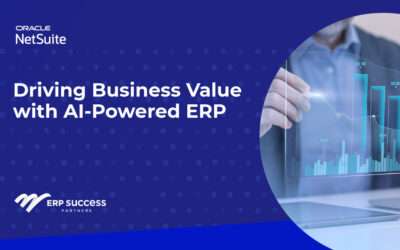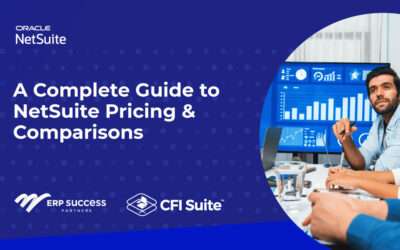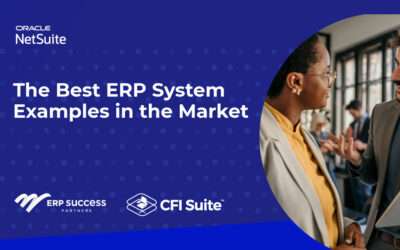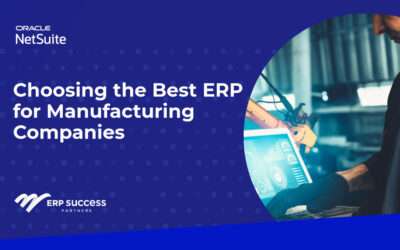Here are some of the top ERP capabilities that aren’t always readily obvious when shopping around for a new or upgraded enterprise system.
Comprised of connected-but-distinct components or “modules,” enterprise resource planning (ERP) systems help employees carry out their respective functions while working in one, unified ecosystem. Finance, accounting, customer relationship management (CRM), marketing, inventory management, and other operational functions can all be handled from a single platform, versus having to “bolt on” new applications as they become available. Add cloud to the equation and ERP becomes a ubiquitous platform that can be accessed and used from anywhere.
What many companies don’t realize is that ERP goes beyond just being able to keep a company’s financials, inventory management, and customer relationships in order. Not only are more capabilities inherent to these platforms, but their makers have also been extending their application capabilities over the last few years.
Here are eight things that most ERPs can handle, and that you should factor into your “must have” list when shopping around for a new system:
According to TechTarget, one important differentiating feature of ERP is the integration between modules that enables the modules and users to interact. For example, a sales order created in the platform’s CRM will be shared with the production module. That means workers in the manufacturing department get access to information about what product to make. “When the product is shipped, data in the inventory management module changes, and when the customer pays, the accounting module records the revenue,” TechTarget explains.
ERP uses a central database where modules record transactions and other information, access that data, and then share it with different departments and individual users. “Having this single source of truth saves users from having to enter information more than once,” TechTarget notes. “It also improves data accuracy and facilitates reporting and collaboration.”
This is one of ERP’s biggest selling points, and something that may get overlooked in favor of other capabilities. Rather than having to train users on how to effectively use a variety of different software applications, companies can focus their efforts on one, centralized ERP platform that everyone can use. “This consistency, at least in theory, makes it easy for workers to learn the system and move around the modules,” TechTarget points out.
Modern ERP systems offer advanced user-permission settings. That means no more unsecured Excel sheets and Google documents for handling your company’s financial, inventory management, or other needs. “ERP software is more secure and robust for these functions, and setting user permissions through ERP’s access control functionality can prevent sensitive data from ending up in the wrong hands,” Software Advice explains. “Users will be able to access only what they need to from the system.”
When employees are working on disparate systems that don’t “talk” to each other, much knowledge and information gets lost in the shuffle. Accounting can’t talk to the sales department about customers that are over their credit limits; marketing and sales teams can’t collaborate on promotions; and supply chain managers don’t know whether their procurement teams ordered enough materials for the coming quarter. With key team members using the same platform, these concerns are minimized, collaboration improves, and information sharing is sewn right into the fabric of the company’s culture.
“Using disparate, poorly integrated business software systems can lead to messy, non-standardized data,” Software Advice warns. “This increases the chances of year-over-year comparisons being inaccurate, making the process more difficult and time-consuming.” It also deters accurate forecasting—a faux pas that has hit many companies below the belt during the global pandemic. “A modern ERP system comes integrated with all the necessary applications. Meaning, your data is standardized and the tools to see year-over-year comparisons and forecasts are built in.”
Better reporting is almost as important to executives as more effective data usage, Oracle NetSuite points out, noting that ERP reporting modules compile information about business operations into reports that empower stakeholders to make more informed decisions, enhance business processes, and identify problem areas before the business suffers. “Reports may include visual representations, such as charts, graphs and dashboards, hopefully revealing trends and patterns to improve business results,” it adds.
Companies use ERP to automate and streamline daily processes, which means that they’re also freeing up employees’ time for tasks that actually generate revenue. For example, software can automatically tie sales orders to the accounting system, or run reports without the need for complicated spreadsheets. “It can also efficiently automate and link administrative and operational capabilities such as finance, HR, purchasing, manufacturing, and distribution to help achieve business flexibility and agility,” Software Advice adds.
Designed to manage and automate operational activities on one, integrated platform, ERP handles a wide range of activities for organizations of all sizes, and across all industries. It also deftly manages all of the functions outlined above, and more.






